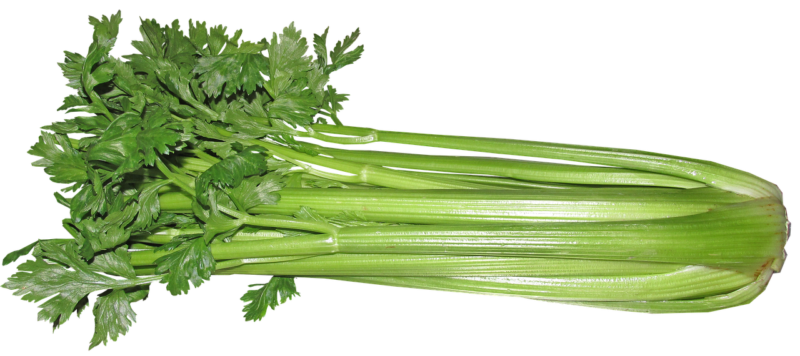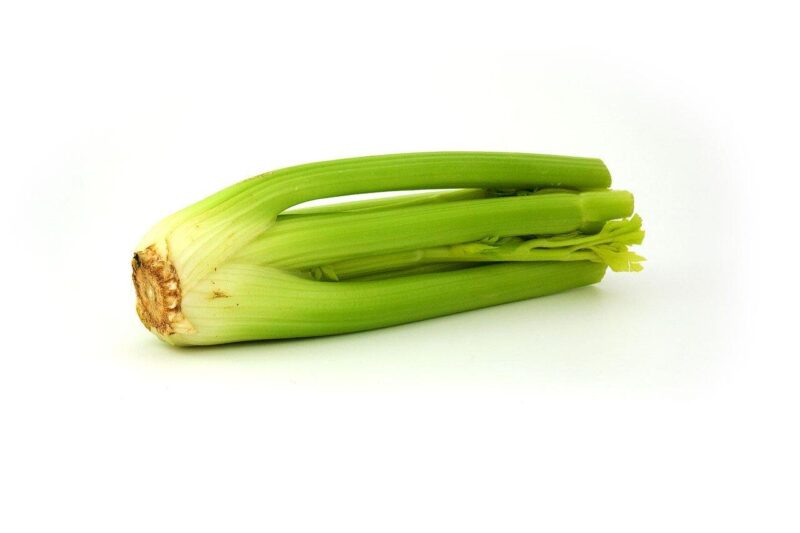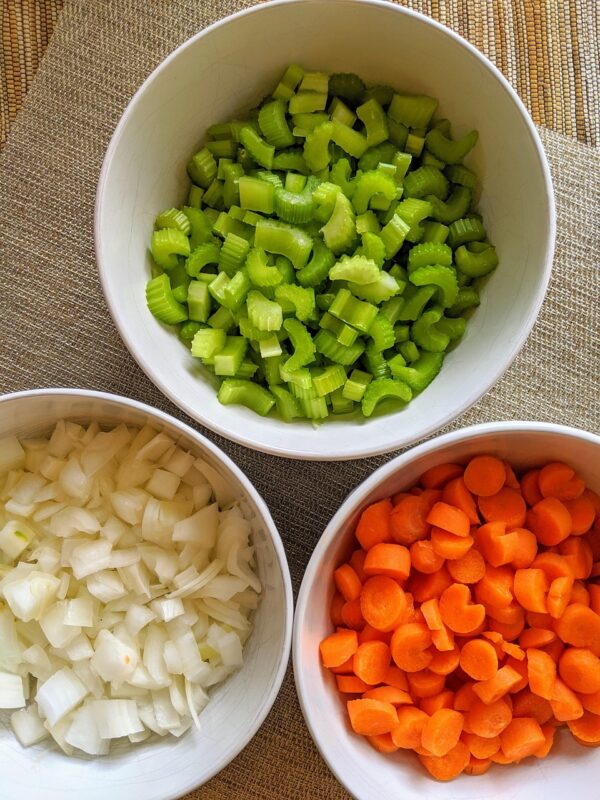Celery is a staple in many kitchens, loved for its crisp texture and subtle flavor. Whether you’re tossing it into a salad, making a hearty soup, or enjoying it with some peanut butter, celery adds that perfect crunch to a variety of dishes. However, there are times when you may find yourself with an abundance of celery that you can’t consume before it goes bad.
This raises an essential question: Can you freeze celery? The short answer is yes! In this comprehensive guide, we’ll explore not only the freezing process itself but also the benefits and drawbacks of freezing celery, tips for maximizing its shelf life, and creative ways to incorporate frozen celery into your meals.
Can You Freeze Celery?

Yes, You Can Freeze Celery!
The answer to the question at hand is a resounding yes! Freezing celery is a practical way to extend its shelf life and reduce food waste. However, it’s important to note that freezing alters the texture of celery. This means that while frozen celery can be a great addition to cooked dishes like soups and stews, it may not hold up as well in salads or as a raw snack after being frozen.
How to Freeze Celery
Freezing celery requires a few simple steps to ensure it maintains as much flavor and nutrition as possible. Here’s a straightforward guide to freezing celery effectively:
Select Fresh Celery: Choose fresh, firm stalks with vibrant green leaves. Avoid any that are wilted or have brown spots.
Wash and Trim: Rinse the celery thoroughly under cold water to remove any dirt. Remove the leaves and cut the stalks into your desired sizes—either in halves, quarters, or smaller pieces, depending on how you plan to use them later.
Blanching: This is a critical step as it helps to preserve the color, flavor, and nutritional value. Bring a pot of water to a rolling boil and prepare a bowl of ice water. Blanch the cut celery in boiling water for about 2-3 minutes, then immediately transfer it to the ice water for an equal amount of time to stop the cooking process.
Drain and Dry: Once the celery is cooled, drain it well and pat it dry with a clean kitchen towel. Excess moisture can lead to freezer burn.
Freezing: Spread the celery pieces in a single layer on a baking sheet and place them in the freezer. This prevents them from clumping together. Once frozen solid, transfer the celery to freezer-safe bags or containers. Be sure to remove as much air as possible before sealing.
Label and Store: Label the bags with the date and contents. Frozen celery is best used within six to twelve months for optimal quality.
The Ideal Freezing Conditions
To ensure celery retains its flavor and texture, it’s important to freeze it properly. The ideal freezing temperature is 0°F (-18°C) or lower. Make sure your freezer is functioning effectively and that the celery is stored in airtight containers to prevent freezer burn.
The Benefits of Freezing Celery
Extends Shelf Life
Freezing allows you to keep celery for months, meaning you can buy in bulk or use up extras without worrying about spoilage. This can save money and reduce food waste substantially.
Nutritionally Retentive
When frozen correctly, many nutrients in celery are maintained. Blanching briefly before freezing helps to lock in these nutrients while reducing enzymes that can cause quality loss over time.
Convenience and Versatility
Having frozen celery on hand provides a fast and convenient ingredient for cooking. You can toss frozen pieces directly into soups, casseroles, stir-fries, or other cooked dishes without worrying about thawing.
The Drawbacks of Freezing Celery
While there are many benefits to freezing celery, it’s important to acknowledge some downsides as well.
Textural Changes
One of the most significant changes that occur during freezing is the textural alteration. The crispness of fresh celery will diminish, resulting in a softer texture once thawed. As such, frozen celery is best suited for cooked applications rather than raw consumption.
Flavor Considerations
Although freezing preserves most nutrients, some people might find that the taste of frozen celery isn’t the same as fresh. The delicate flavor can become slightly muted during the freezing process.
Potential for Freezer Burn
If not stored properly, celery can develop freezer burn, which leads to off-flavors and textures. Using airtight containers and vacuum-sealing can help minimize this risk.
Alternative Preservation Methods

If freezing doesn’t seem like the best option for storing your celery, there are several other methods to consider:
Dehydrating
Dehydrating celery can be an excellent option for long-term storage. When dehydrated, celery loses its water content and becomes lightweight, making it perfect for addition to soups and stews. Simply slice the celery and use a food dehydrator or an oven set to a low temperature to remove moisture.
Canning
Canning celery is another option, although it requires special equipment and can be complex. However, if done correctly, it can lead to preserved celery that retains its flavor for a long time.
Pickling
Pickling celery can add a new twist to this classic vegetable. Pickling not only preserves celery but also adds tangy flavor, making it a great addition to sandwiches and salads.
Understanding Celery: A Quick Overview
Before we dive into the freezing process, let’s take a moment to appreciate celery itself. Known scientifically as Apium graveolens, celery is a biennial plant cultivated as an annual vegetable. Traditionally consumed raw or cooked, it is low in calories and a great source of vitamins K and C, as well as potassium and folate. The crunchy stalks are often a key ingredient in dishes, adding both flavor and texture.
The Nutritional Benefits of Celery
Celery is not just a crunchy snack; it brings a wealth of health benefits:
Rich in Vitamins and Minerals: Celery is an excellent source of vitamin K, which is essential for bone health and blood clotting. It also contains vitamin C, a powerful antioxidant.
Hydration: With a high water content (around 95%), celery is great for staying hydrated.
Low-Calorie Snack: A standard serving of celery (about one cup) contains only around 14 calories, making it perfect for snacking or adding to meals without significantly increasing calorie intake.
Digestive Health: The fiber in celery can contribute to digestive health, helping to prevent constipation and promote a healthy gut.
Understanding these benefits illustrates why having celery readily available can be a major advantage for anyone looking to lead a healthier diet.
Creative Ways to Use Frozen Celery
Once you’ve frozen your celery, you might wonder how to use it creatively. Here are some enticing ideas:
Soups and Stews
Frozen celery works wonderfully in soups and stews. Simply toss unmelted pieces into your pot. They’ll add flavor and nutrition without the need for thawing.
Stir-Fries
Adding frozen celery to stir-fries is a quick way to boost your vegetable intake. Just toss in the frozen chunks along with other veggies for a colorful and nutritious meal.
Smoothies
Looking for an inventive way to include nutrients? Use frozen celery in smoothies. It’ll add texture, fiber, and hydration to your drink.
Sauces and Dips
Frozen celery can be chopped and used in sauces or dips. Sauté with garlic and herbs for a delicious base to pasta sauces, or blend into a veggie dip.
Celery Juice
While it’s best to use fresh celery, if you find yourself with a stash in the freezer, you can still make celery juice! Blend it with water and strain for a hydrating drink.
FAQs About Freezing Celery
How long can I keep frozen celery?
Frozen celery is best consumed within six to twelve months. While it remains safe to eat past this point if kept at a consistent freezing temperature, quality may decline.
Can I freeze whole stalks of celery?
While technically possible, freezing whole stalks is not recommended due to potential texture changes and difficulty in using them directly from the freezer. Opting for cut pieces will yield better results.
Is it necessary to blanch celery before freezing?
Blanching is not strictly necessary, but it helps maintain the quality and nutritional value of the celery. It is highly recommended for the best outcome.
Conclusion
Freezing celery is an effective and practical solution for anyone looking to extend the life of this nutritious vegetable while minimizing waste. By following the proper steps to freeze and store celery, you’re ensuring that you can enjoy its crunch and benefits long after your grocery visit. While there are some considerations to keep in mind—such as textural changes and flavor adjustments—frozen celery can still bring delightful versatility to your cooking.
By incorporating frozen celery into your meals, you can boost your nutrition seamlessly and take advantage of this versatile ingredient year-round. So the next time you find yourself with a bounty of celery, rest assured that you can freeze celery and enjoy it in many delightful ways, sharing it as a vital addition to your culinary creations.








